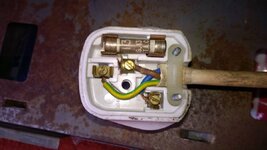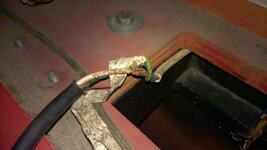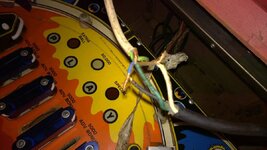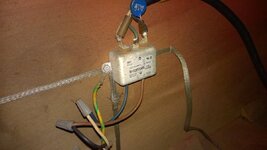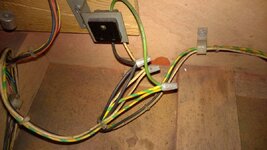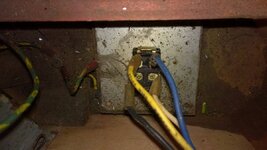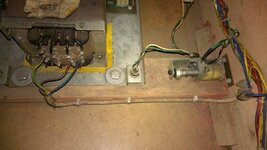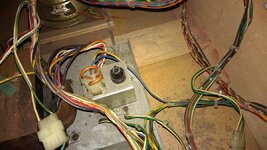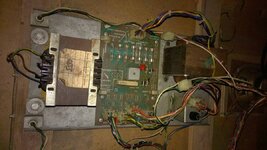Hi All, this is my first post here. I got a Gold Ball last summer that had been in outside container storage for several years, known working(ish) when went into storage. Fortunately it only had minor problems which I resolved one by one and the machine was working great and enjoying playing it (famous last words!). I also removed half of Brighton beach from the PF how the heck does that get in there.
However, now it is behaving strangely, in particular Solenoids 01 - 07 stopped working. I unplugged the sound card and they were back on. Having re-plugged the sound card back all appeared ok again but now it's reacting very slowly for example when the ball drains it takes ages to reset.
I'm thinking it's something more fundamental and I need to check the machine and implement sensible upgrades ground up, being a newbie I went for the straight switch on approach at the time.
I'd appreciate some general advice for t/shooting approach to follow - this article 'Repairing Bally Electronic Pinball Games from 1977 to 1985' appears to be a great resource for this machine.
Thank you for any advice.
However, now it is behaving strangely, in particular Solenoids 01 - 07 stopped working. I unplugged the sound card and they were back on. Having re-plugged the sound card back all appeared ok again but now it's reacting very slowly for example when the ball drains it takes ages to reset.
I'm thinking it's something more fundamental and I need to check the machine and implement sensible upgrades ground up, being a newbie I went for the straight switch on approach at the time.
I'd appreciate some general advice for t/shooting approach to follow - this article 'Repairing Bally Electronic Pinball Games from 1977 to 1985' appears to be a great resource for this machine.
Thank you for any advice.

![WP_20150119_18_34_45_Pro[2].jpg WP_20150119_18_34_45_Pro[2].jpg](https://www.pinballinfo.com/community/data/attachments/13/13252-b40374ab0e375f7cb70a52eea4312cab.jpg?hash=tAN0qw43X3)
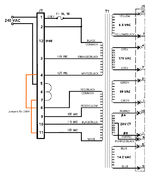
![WP_20150122_18_25_55_Pro[1].jpg WP_20150122_18_25_55_Pro[1].jpg](https://www.pinballinfo.com/community/data/attachments/13/13318-d11ae039ace043f36beea46c9d07a696.jpg?hash=0RrgOazgQ_)
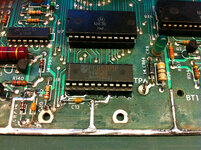
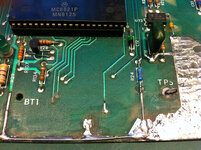
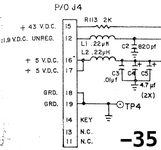
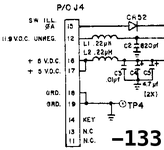
![WP_20150124_14_19_49_Pro[1].jpg WP_20150124_14_19_49_Pro[1].jpg](https://www.pinballinfo.com/community/data/attachments/13/13382-e64267238ec3c967346539ad94417c71.jpg?hash=5kJnI47DyW)
![WP_20150124_14_19_14_Pro[1].jpg WP_20150124_14_19_14_Pro[1].jpg](https://www.pinballinfo.com/community/data/attachments/13/13383-90c50dc7ff66c52b3ff3cb96704ffbf2.jpg?hash=kMUNx_9mxS)
![WP_20150124_14_21_59_Pro[1].jpg WP_20150124_14_21_59_Pro[1].jpg](https://www.pinballinfo.com/community/data/attachments/13/13384-82cafb9977dc2f267b693b78ad72fc7b.jpg?hash=gsr7mXfcLy)
![WP_20150124_17_39_21_Pro[1].jpg WP_20150124_17_39_21_Pro[1].jpg](https://www.pinballinfo.com/community/data/attachments/13/13387-7343a9846fe8a681899b3d09e9c15a14.jpg?hash=c0OphG_opo)
![WP_20150124_17_43_24_Pro__highres[1].jpg WP_20150124_17_43_24_Pro__highres[1].jpg](https://www.pinballinfo.com/community/data/attachments/13/13388-9f214ecbb4c4e7c8bee731aa5e3971cd.jpg?hash=nyFOy7TE58)
![WP_20150124_17_43_57_Pro__highres[1].jpg WP_20150124_17_43_57_Pro__highres[1].jpg](https://www.pinballinfo.com/community/data/attachments/13/13389-dd84552f17fdca51c75521b39389ec29.jpg?hash=3YRVLxf9yl)
